Posts
The Challenges and Pressure on the New Lawyer
- - By : JPG
- Date : 19-Feb-18
- Leave a comment
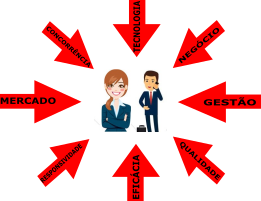 It is undeniable that all of us, people, professionals and companies are having to adapt ourselves to the huge amount of information that bombards us daily and mainly to the accelerating pace of all the changes that our society is facing now. The exponential growth of information in the digital word such as: procedural pieces, contracts, jurisprudence and mainly e-mails create for itself an increasing difficulty when we talk about searches, correct identification and analysis of information that are relevant to any lawyer.
It is undeniable that all of us, people, professionals and companies are having to adapt ourselves to the huge amount of information that bombards us daily and mainly to the accelerating pace of all the changes that our society is facing now. The exponential growth of information in the digital word such as: procedural pieces, contracts, jurisprudence and mainly e-mails create for itself an increasing difficulty when we talk about searches, correct identification and analysis of information that are relevant to any lawyer.
On the other hand, the main function of the lawyer, which is to draw up a strategy to the solution of the legal challenge through his/her ability to analyze the information (provided by the customer and the existing legislation, jurisprudence, etc), his/her intellect and experience in the synthesis of his/her ideas, his/her ability to build the case and at last the quality of his oral or written expression when elaborating any legal documents or oral defense, still rely on the human brain, with all its limitations.
Other two factors that also challenge and more and more pressure the legal profession: the efficacy that is the pressure exerted by the clients for better and faster solutions and the competitiveness that is the pressure exerted by the market forcing the professionals to better manage their costs and offer services for more competitive prices.
The great differentiator in the past was the quality (I remember that, two decades ago, there were few corporate offices with international quality in Brazil) and nowadays there are hundreds of excellent offices competing in a market where the increase in demand was significantly lower than the expressive increase in the supply of quality legal services.
With the changing in the legal market behavior, which is becoming more robust and mature (coming closer to the behavior of the other competitive markets) the perception of the general quality of the rendered service occurs by a blend of factors where the legal quality, although it is still the most important one, is no longer the unique factor for advantage. Other factors, such as assistance, responsiveness, understanding the client’s business, managerial capacity, innovation, use of technology and, finally, the brand image, also interfere directly in the client’s satisfaction.
And, as if that were not enough, there is also the pressure exerted by the society’s changing of behavior, which is more and more connected to everything, and to everyone and, concomitantly, generating more and more that sense of urgency and expectation for immediate results in it.
In the three possible career pathways in Law, i.e., public career, corporate career or even a single career in offices, the knowledge of management and governance and of technological updating have become as important as the legal technical development. Technology is faced by the lawyer (and this could not be otherwise) as a means and not an end, and it should be used as a very powerful tool in order to improve efficiency and efficacy in the profession.
The specializations of Law are increasingly spreading towards the fields of economy (Technology, Communication, Agribusiness, Life Sciences, etc.) and no longer by the traditional mode, that is, Civil, Labor, Tax, etc.
The most knowledgeable and most competitive lawyer must be prepared for the challenges of his/her profession, in addition to the legal know-how, and he/she should deeply know the market to which he/she renders services, but as importantly, he/she should possess:
Managerial Knowledge: to get to know and to know how to use the management techniques of a modern company that is engaged in the competitive market.
– Broader knowledge in issues related to human relations in order to manage his/her team and talents better by adopting motivating challenges and the use of specific “KPI´s”, in addition to modern career plans and adapted to new generations.
– Deeper knowledge of institutional and personal Marketing in order to maximize his/her share in the market by means of modern participation techniques and higher reach in the digital media.
– Better training in corporate management to economically, financially and strategically manage his/her company with the help of ERP, BI software units, to name a few.
Technological Updating: to get to know and to know how to use new technologies, and able to make the most of them in order to:
– Quickly find the information that is necessary for the production of his/her legal document by means of the help of search robots and/or cognitive intelligence systems.
– To organize and correctly use his/her strategic knowledge (explicit and tacit), with the use of Knowledge Management Systems (KM).
– Intensively use the prediction systems, statistically analyzing internal and external data, jurisprudences and prior decisions from courts and judges.
– To use the technologies of generation of his/her documents by means of “document automation” software units, speeding up production and analysis of documents.
– To use modern communication and internal collaboration tools among his/her professionals and, external ones with the clients and partners, always focusing on the increase of efficiency and productivity.
Although the technology is just a tool, all the legal or management activities will be used and managed by lawyers with the help of software and intelligence systems, which will require from them a much more eclectic background, beyond the purely technical training such professionals are being submitted to in the universities today, in order for them not to run the risk of becoming Jurassic professionals!
The Real Tech Revolution in the Legal Profession (WORDS x NUMBERS)
- - By : JPG
- Date : 23-Nov-17
- Leave a comment
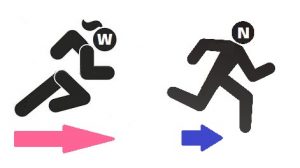 Much has been said about Artificial Intelligence and its impact in the legal profession, some futurologists even claiming that the profession will be totally replaced by robots and/or computers in the future and this has caused a “frisson” and aroused much insecurity in many professionals.
Much has been said about Artificial Intelligence and its impact in the legal profession, some futurologists even claiming that the profession will be totally replaced by robots and/or computers in the future and this has caused a “frisson” and aroused much insecurity in many professionals.
I do not agree with this categorical statement, but I do agree with the revolution that those new technologies are now imposing. In my humble opinion, I believe that this technological wave will indeed make a revolution, not only in the legal profession, but in all professions called human and that still heavily rely on the interaction of human beings in order to be exercised.
First of all, we must dismember the term “Artificial Intelligence”, which is nothing else than a series of technological advances that are enabling the application of several theories and statistical models, some of them already existing for many years.
Let us start with the Moore’s law.
According to Moore’s prediction, in 1975, the processors (chips) would double their capacity every 12 months, with their size halved and this fact has been verified over all those years and must reach a physical limit of size (measured in nanometers) around 2025. This exponential increase in the processing capacity has allowed what was once unthinkable, mainly when it comes to words, images and video, which requires a “muscle” greatly superior to that needed in order to process numbers.
Another very important item relates to the time that industry in general dedicated itself to the development of tools for the processing of numbers or other information and that is closely linked to the previous item.
The analysis tools of the database started to be developed in the 60s and it was in 1970 that IBM introduced the concept of relational archive and SQL (Structured Query Language) and in 1980, the Oracle released Oracle 2 and that together revolutionized the way numerical data were treated.
It was only at the end of the 90s that Google came to revolutionize the way we get words in Internet (Google search was a great success in 1998) and this gap of nearly 40 years partly explains why only now the tools that deal with words begin to appear.
Still on the trace of the hardware development, we will have to refer to the evolution of the communication speed. The Internet2 with a theoretical speed of 10Gbps (this means that a DVD with a capacity of 4,7Gb can be transferred in 3,5 seconds); the “IPv6” address protocol will enable 79 octillion times the current capacity of addressing the “IPv4” protocol and, at last, the 5G technology, whose rollout in Brazil is estimated to occur in 2018, has 10 times the speed of 4G, just to give three examples.
According to IBM information, 88% of existing information today and which are available in internet are still inaccessible to the digital and statistical addressing (which was the big leap generated in the 60’s with the database), since they talk about words, images and sounds. Also, according to it, Watson currently has the capacity to process (and interpret) 800 million documents in just one second!
All this technological progress allowed the research and the development industry to focus on solving the difficulties that we have (so far) in the digital processing of the so-called “human natural language”, besides the simple fast word searcher.
There are dozens of statistical algorithms (some have been existing for years) such as: decisions trees, “clustering”, “ensemble”, regressions, “NaiveBayes”, etc, associated to the dictionaries of meanings and synonyms, having allowed the computers to interpret the words inserted in a given context, and, as a consequence, interpret the meaning of the whole text.
These or other (no matter which) algorithms allow some corrections in their responses, so that, as the results are displayed, the system will be improved and the accuracy level of the responses will be increased. These corrections can be done by human beings (“supervised machine learning”) or automatically by the computer through statistical analysis. (unsupervised machine learning”)
The example I often use refers to how a machine (set of hardware and software) can correctly seek and differentiate in the context when a lawyer searches for the word “mandado” (warrant or ordered). Let us take as an example two electronically stored texts and in one of them we find the sentence: the judge had ordered the carrier to look for his clothes at his house, and, in the other one, the sentence: the judge issued a search and seizure warrant in the house, and the lawyer searches for words containing judge, warrant and house. Only through algorithms and analysis of the rest of the text that a “smart searcher” will differentiate the two sentences and bring the correct one.
As I have already mention, in my humble opinion, the great revolution that is happening in law (and in all other human professions) is the capacity to digital and statistically handle the words, that is, “The words are coming closer to the numbers”!
ILTACON 2017 – THE EXPECTATIONS ADJUSTMENTS IN TECHNOLOGICAL TRENDS FOR THE LEGAL MARKET
- - By : JPG
- Date : 02-Nov-17
- Leave a comment

During the week between August 13 and August17, the city of Las Vegas held the fortieth edition of ILTACON, in which I had the honor of being the first Brazilian to participate as a “speaker” (after 20 years participating as a listener), where the new collaboration platforms for the legal market were discussed.
The theme “Artificial Intelligence” is still the current buzzword, but, in this edition of ILTACON, the issue was discussed with much more serenity, after the frisson that took place in the previous edition. Not that the issue had lost its importance, but by the fact that the companies have realized that adopting this concept is not the panacea for all the problems, much less the only solution that is going to solve all of them at the same time. Although IBM has presented, in one of the opening sections, the immense capabilities of Watson, the truth is that we are still fairly far away from the capabilities of Hal (for the ones who remember the Kubrick film) or the boy David (Al film).
As I had already written in previous articles, the so-called Artificial Intelligence, or more specifically, Cognitive Intelligence, is nothing more than the set of technological developments that have emerged in recent times and that, together or separately, has helped people in some specific tasks that, until recently, was only possible by the human brain.
We can list the following new techniques (some of them are not so new, but are being continuously improved): facial recognition, voice recognition, natural language recognition (Alexia, Siri and Google Voice Search, still embryonic),transformation of verbal language into text and vice versa, statistical algorithms of simulation and prediction (Regression, Decision Tree, VMS, Naïve Bayers, KNN, Random Forest, etc). and more specifically for the legal market (which is what interest us) the algorithms of semantic interpretation of texts that enable contextual analysis and the extraction of the subject to which a particular text refers to.
Out of the huge amount of digital information that currently exists, about 88% of them are still inaccessible to interpretation and to the digital addressing (according to an appraisal made by IBM), as they are information referred to as unstructured, that is, texts, videos and sounds.
The professions referred to as humanities or non-exact, such as Law and Medicine, deal with those pieces of information and the technology to address them was not able to develop with the same speed it was developed when addressing numeric information.
The first programs to address the so-called databases emerged in the mid 60’s and have been highly developed since then and they became more user-friendly (in the past only DBA’s were able to extract information from the databases, currently with the help of the systems such as “Tableau” or “Qlik”, almost any user can do so without a great deal of training.) On the other hand, the search tools per word only came up in the 90’s (Google was a big success back in 1998) and the first search engines for the legal market emerged about one decade ago, however, with no intelligence at all to notice when a user searches for the word “letter” he may also be searching for the word “correspondence”, “memorandum” or “memo”, etc. For this little intelligence to operate, a programmer and a lawyer need to work together and they should create libraries of specific synonyms and should register them in the system, making them, despite being so good, laboriously limited.
Due to this delay or inability of technology (the difference does not matter) to solve these difficulties, the non-exact professions still much depend on the human interpretation of the texts, sounds and videos, making them relatively protected from the technological “attack.” So far!
The real big revolution that has already started still shows its first steps, but it is inevitable; this is what I call as : the approximation of the words to the numbers”. When the new technologies are able to statistically address the words in the same way they address the numbers and/or when a computer is able to fully understand all the nuances of the human language and interpret it (with affordable costs to everyone), everything will be different. Companies, such as RAVN and KIRA (just examples), have already developed contractual analysis products incorporating those new technologies and making the life of the lawyer much more agile. There is still a long path to be taken, but, surely, the way how some professions are performed, will be radically changed.
LAWYERS´EVALUATIONS: STILL VERY FEW KPIs USED
- - By : JPG
- Date : 24-Jul-17
- Leave a comment
21/07/2017 – Lawyers’ Evaluations: Still Very Few KPIs Used | Legal Management – Association os Legal Administrators
LAWYERS´EVALUATIONS: STILL VERY FEW KPIs USED
By Jose Paulo Graciotti
According to Management Consulta nt Peter Drucker, knowledge workers
nt Peter Drucker, knowledge workers
are individuals who have “high degrees of expertise, education or
experience and the primary purpose of their jobs involves the creation,
distribution or application of knowledge.” Their evaluations consist of
several factors ranging from the strictly objective to the more subjective
and they can be defined by the business philosophy of the office where
they work.
Before evaluating an individual’s work, we should do an analysis of this specific professional and
contextualize him or her in the kind of company where he or she works. The focus for this article
is the lawyer (partner or associate).
We have to understand the particular behavioral psychology of a lawyer to analyze and
understand the way he or she behaves.
According to Caliper Human Strategies (UK) Ltd., the following are some of a lawyer’s main
psychological features:
- Very low tolerance to failures
- High level of skepticism
- Great autonomy
- High reasoning ability
- High abstract thinking
- High sense of urgency
- Very low resilience
- Low socialization ability
Evaluators usually have some difficulties because they mix up some of the subjective indicators
and the qualification or the background of the professional. Qualification factors — such as the
technical or academic background, previous professional experience, specializations and
languages — should only be taken into consideration at the time of the inclusion of this
professional in the remuneration grid and in his or her career plan. They should not be used in
the individual’s periodic performance evaluation.
Another important factor that makes properly conducting an evaluation more difficult is in
relation to the office: the lack of more elaborate objective indicators (obtained in management
reports that should exist to help in the economic-financial management of each office). Many
small and midsize offices still perform their own management, which is insufficiently professional
and computerized. As such, the objective evaluation of their lawyers usually present a few
indicators, such as appointments and invoiced hours.
The key performance indicators (KPI) should be much more encompassing and only consider its
variation during the analyzed period. Then, there is a new barrier to overcome, as, when
implemented, the evaluation policy ends up showing eventful previous distortions originated in
the past of the professional, such as:
Wrong insertion in the career plan and remuneration grid by the time of the contracting
Insufficiently professional previous evaluations
Lack of a well-defined career plan
The same way we wouldn’t use pliers in place of a hammer, we must not use the performance
evaluation to correct those distortions.
Lawyers could and should be evaluated on some of the following performance indicators:
PRODUCTIVITY INDICATORS:
- Billed hours/worked hours
- Billed hours/target of the hours defined by the office
- Billed hours/partners billed hours
- Billed hours in area matters/billed hours in other areas matters
- Billed hours in his or her matter/total hours billed in that matter (KPI for partners) corrected or cut hours
FINANCIAL INDICATORS:
- Net individual contribution (invoiced — salary)
- Worked gross amount/billed amount
- Billed amount/collect/received amount
- Percent participation in profitable matters or not
- Growth in the period
- Profitability of the closed/concluded matters (for partners)
CLIENT ACQUISITION INDICATORS/CROSS-SELLING:
- Client fee received in the period
- New matters opened by indication
- Billed hours/amounts generated to other areas
INSTITUTIONAL INDICATORS:
- Hours intended for speeches and organization of marketing events
- Hours intended for articles and publications
- Hours dedicated to the performance of internal training sessions
- Hours dedicated to pro bono
- Dedicated hours for office managing issues
SUBJECTIVE INDICATOR:
- Technical evolution in the period
- Managerial evolution in the period (team)
- Evolution in the client’s management/matter (autonomy)
- Client’s degree of satisfaction (whenever there is this type of research)
In addition to those KPIs listed here, we could add several others. However, it will depend on the
existing managerial reports, as well as on the definition of their mix of values and weights, on the
work philosophy and market ranking of each office.
Gaining the support of an outsourced and experienced consultancy firm — which is also exempt
from internal political interactions — may not only help with this challenge, but also with
defining the specific model to the evaluation of these professionals.
ABOUT THE AUTHOR
Jose Paulo Graciotti is a Consultant with Graciotti Assessoria Empresarial and an ALA member. He
specializes in the governance, planning and organization areas, with sound knowledge in
information technology and knowledge management. For the last 28 years, he was responsible
for management and information governance on outstanding law firms in Brazil.
Lawyers’ Evaluations: Still Very Few KPIs Used | Legal Management
http://www.legalmanagement.org/departments/lawyers%E2%80%99-evaluations-still-very-few-kpis-used
Contact Us Sta Board of Directors
Copyright © 2017 Association of Legal Administrators. All Rights Reserved. Editorial Guidelines
http://www.legalmanagement.org/departments/lawyers%E2%80%99-evaluations-still-very-few-kpis-used
4/4
Our participation on the debate “Collaboration Platform in the Legal World” – ILTACON 2017
- - By : JPG
- Date : 20-Jul-17
- Leave a comment
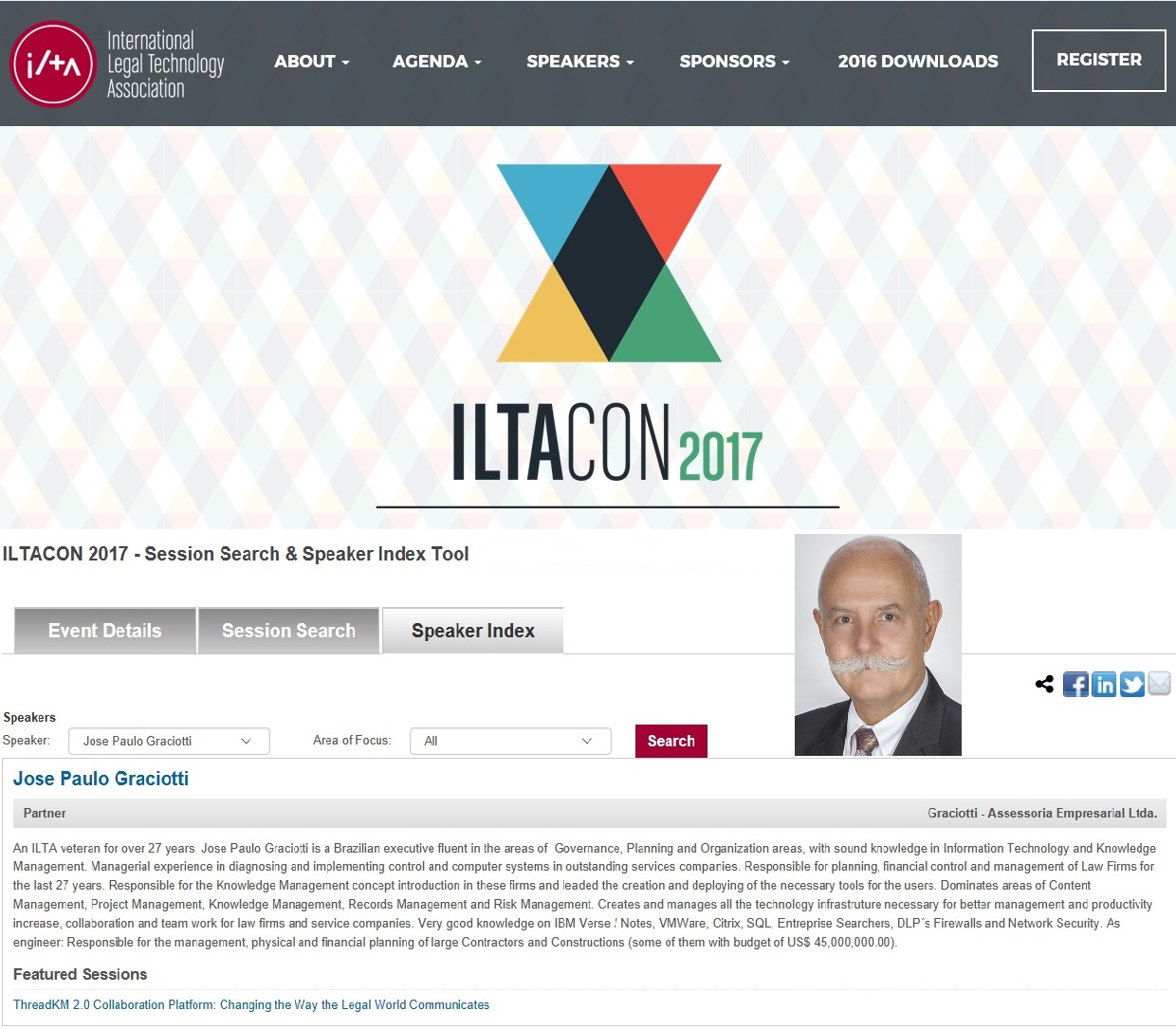
With honor and privilege I share with all my participation on the debate: “ ThreadKM 2.0 Collaboration Platform: Changing the way the Legal World Communicates” at ILTACON 2017 which will take place at Mandalay Bay, Las Vegas next August 13th thru 17th.
The Conflict between practicing law and managing the business
- - By : JPG
- Date : 17-Jul-17
- Leave a comment
The Conflict between practicing law and managing the business: when this problem emerges and how to solve it.
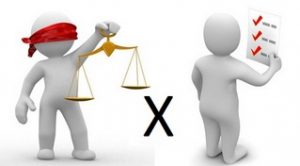
In one of my first metaphorical comparisons about the business called LAW FIRMS, I compared them to a restaurant, asking the following question: What makes a person go (or return) to a certain restaurant?
The answer was (and still is): great food, great treatment/services and consistent price!
As it has already been mentioned, Law Firms perfectly fit in this answer, only replacing the expression “great food” with “great legal solutions”, or “great legal solutions, great treatment/services and consistent prices!
For this to be possible, we shall need great professionals (legal or managerial), current systems and technology, much training and mainly a properly sized and very good organization and it is at this very point that the mentioned conflicts begin to appear.
I again need, in this moment, to refer to the natural evolution of a law firm after its creation. We have already seen that offices are generally set up by the agglutination of two or more legal professionals who, due to several reasons (complementation of areas, professional affinities, entrepreneurship, personal and ethical objectives, etc.) get together and set up a law firm.
Again, the metaphorical comparison with a restaurant becomes illustrative, as we can compare the lawyer(s) that hold the knowledge and the technical skills to provide ideal legal solutions to their clients, to a Chef that also holds the knowledge and skills to make delicious dishes.
Now, let us imagine that this Chef in the evening (just as an example) will be heading the production of those dishes, but he also has to worry mainly about the correct choice and purchase of the products (meat, fish, vegetables, seasonings, etc.); with the contracting and training of maîtres, sommeliers, waiters, receptionists, etc.; with the decoration and presentation of the tables and, at last, with the financial aspects of the business called the “restaurant”.
In the same way a Chef likes to create and make his dishes, the lawyers also like to advocate and create legal solutions to their challenges, but they must also worry about all the other tasks and decisions that are inherent to the managing of their business and that are generally regarded as “boring obligations” or” necessary evil”.
As the business grows, (because of the good dishes or the great legal solutions offered), it is natural that the management becomes more and more complex, requiring the Chef’s or the manager partner’s more and more attention and “stealing” their time in the production of their technical works (to which they so much like to dedicate).
The solution to this conflict comes up when the company (whatever it is) begins to worry about the other back-office works, as important as the ones of the so-called “core business”, which are necessary for the fulfillment of other requirements in order to be successful.
The correct dimensioning and training of the administrative team of a good technical level; the adoption of the current technological infrastructure and correctly adapted to the business; the constant training and improvement of all members of the company and, mainly,everyone’s alignment to the company’s ´philosophy, are fundamental to relieve the managing lawyer, giving him more time to dedicate himself to the legal production.
All those aspects, added to the delivered product, enable the company to achieve the quality that is necessary to satisfyits clients and this answers our initial question!
José Paulo Graciotti, is consultant and founding Partner of GRACIOTTI ASSESSORIA EMPRESARIAL, engeneer by Escola Politécnica Universidade de São Paulo, with Financial MBA at FGV and specialized in Knowledge Mnagement by FGV. ILTA Member since 1998 (International Legal Technology Association) and ALA (Association of Legal Administrators), with more than 28 years managing Law Firms in Brazil – www.graciotti.com.br
SUCCESS! 1st International Conference – Information Governance for the Legal Market
- - By : JPG
- Date : 22-May-17
- Leave a comment
 The 1st Information Governance Conference for the Legal Market was much more than public success; it was really content and interactivity success!
The 1st Information Governance Conference for the Legal Market was much more than public success; it was really content and interactivity success!
Undoubtedly, the audience with over 170 lawyers captured the certainty that the legal market will be fully changed with Information Governance.
 This thesis was explained by Patrick DiDomenico, the Knowledge Management CEO of the North-American Office Ogletree, Deakins, NSH, Smoak& Stewart (headquartered in New York and with branches in 50 North-American states) and the author of the book “Knowledge Management for Lawyers”, which describes how a law firm will remain before the competition.
This thesis was explained by Patrick DiDomenico, the Knowledge Management CEO of the North-American Office Ogletree, Deakins, NSH, Smoak& Stewart (headquartered in New York and with branches in 50 North-American states) and the author of the book “Knowledge Management for Lawyers”, which describes how a law firm will remain before the competition.
 The CCO / CLO for the Americas of DHL company, Mark Smolik, showed how to be able to reduce the legal service of 348 law firms in the world to 19 in less than 10 years. “My piece of advice is that all the law firms should understand that they must think as entrepreneurs because they are being constantly evaluated and, today, there are several competitive firms”, he concluded.
The CCO / CLO for the Americas of DHL company, Mark Smolik, showed how to be able to reduce the legal service of 348 law firms in the world to 19 in less than 10 years. “My piece of advice is that all the law firms should understand that they must think as entrepreneurs because they are being constantly evaluated and, today, there are several competitive firms”, he concluded.
Mark Smolik also showed how the North-American startups have been developing metrics performance software units so that the companies in the 2008 post-recession in the United States may have information for the contracting decision.
And the startups offered us a show of information about technological innovations and tools, such as Finch, Digesto, Justto, Intelivix and Optimum. Thomson Reuters showed why it is the most traditional services company in the sector.
 Santander, Netshoes and Dataprev Legal CEOs showed which the opportunities and metrics of mega companies are available in order to contract and keep the law firms that can no longer be passive, they should bring legal solutions and ROI to start the conversation.
Santander, Netshoes and Dataprev Legal CEOs showed which the opportunities and metrics of mega companies are available in order to contract and keep the law firms that can no longer be passive, they should bring legal solutions and ROI to start the conversation.
 In addition, Machado Meyer, Demarest, MattosFilho and Tozzini Freire partners, the biggest offices in Brazil, opened their technology strategies to promote KM, BI and use AI as a tool to be outstanding and keep competitive.
In addition, Machado Meyer, Demarest, MattosFilho and Tozzini Freire partners, the biggest offices in Brazil, opened their technology strategies to promote KM, BI and use AI as a tool to be outstanding and keep competitive.
Law Firm Governance and the human hands metaphor
- - By : JPG
- Date : 18-May-17
- Leave a comment
The human hands, along with the brain, are the main units that are responsible for the differentiation of the human beings and of our dominance on Earth. With its 27 bones and 35 muscles, it can hold, push, hit, pull, carry, make gestures and signs, besides having a huge sensorial expertise. It is a wonder of the evolutionary engineering!
And what does it have to do with the Law Firms Governance ?
In my humble vision, I will make an analogy between these two elements, as the rational and efficient management of an office (and virtually any company) should basically have a thinking and decision-making element (the brain) associated to a very capable, flexible, efficient, sensitive and adaptable performer element (the hands).
The human brain finds its analogous element in the decision-making rational structure that every office should have: the founding leader/entrepreneur, for example, in those small-size ones up to the most complex organizational structures containing CEO’s, boards, executive committees, managers, etc, in the large-size ones.
For this organizational structure to work properly, it is necessary to have a tool (two, in the human case) which is able to perform the tasks correctly and efficiently. For this to happen, each one of these elements should have specific functions or features combined to properly perform all its functions (like picking an object up).
For the management of an office to be efficient, the same way as our hand picks an object up, it is necessary to have the existence and the proper distribution of the job posts for each one of its elements (the fingers), and this way I devise the following characteristics as shown below:
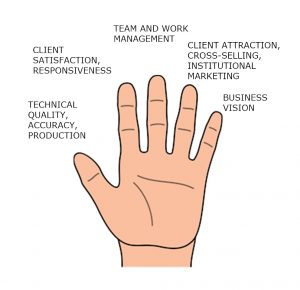
Note: the distribution of duties was merely casual. There is no specific function for each finger!
1- Technical quality, accuracy and production capacity: in this “finger”, we can place the technical and legal level of the Law Firm (as a last resource of its members) which will be the responsible for the capacity to assist the clients as well as more complex matters, to add value to their solutions with the consequent efficiency in collecting its fees and also in its image in the market.
2- Client attraction capacity and institutional marketing: In this “finger” we place the capacity to attract clients and all the initiatives of institutional marketing that are responsible for feeding the company’s growth.
3- Support to clients and quality in the rendering of services: in this “finger” (one of the most important in the current scenario), we can associate the ability to support, fulfill and, if it is possible, to amaze the customers with pro-active and innovative approaches in the rendering of the services. It s important to point out that good services go from the telephone assistance (call center), e-mail, whatsapp, etc, surely going through the legal services themselves, up to the expertise in the emission of invoices and their monitouring.
4- Work and Team management skills: in this “finger”, we place the way with which the office components organize their works, manage their teams (under the technical and motivational viewpoint), those matters under their responsibility as well as their contacts.
5- Business Vision: in this “finger”, we should place the capacity to understand the causes and the consequences of all the attitudes and decisions made internally and that will affect the governance of the office, that is, finances, management, growth, investments, strategy, image, etc.
In this metaphorical figure, we can also fit the ideal characteristics of the composition of the society (of its partners) or otherwise, the individual characteristics of each partner. Being aware that every person has its own professional profile, we can guess that every individual may have only some (usually one or more) of those innate or more developed characteristics and the combination of those people in a company means art.
It is important to highlight that, like the human hand, in order to obtain a good operation of the office, the existence of all fingers is necessary, with their own, combined and balanced characteristics, and not only the set of several equal fingers. Could you imagine what it would be like if we have 5 index fingers or 5 ring fingers? It would not work very well!
José Paulo Graciotti, is consultant and founding Partner of GRACIOTTI ASSESSORIA EMPRESARIAL, engeneer by Escola Politécnica Universidade de São Paulo, with Financial MBA at FGV and specialized in Knowledge Mnagement by FGV. ILTA Member since 1998 (International Legal Technology Association) and ALA (Association of Legal Administrators), with more than 28 years managing Law Firms in Brazil – www.graciotti.com.br
The Law Firm and the Brownian Motion
- - By : JPG
- Date : 27-Mar-17
- Leave a comment
Definition: The Brownian motion can be defined as the random motion of microscopic particles immersed in fluid(1).
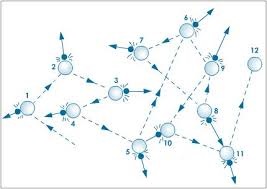 In a fluid (liquid or gas) there are basically two forces that constantly interact: the first one is the force that amalgamates the molecules and keeps them together forming the liquid (I will not discuss or define this force now) and the other one is this vibration that is inherent to the particles and makes them “collide” with each other.(2)(see footnotes).
In a fluid (liquid or gas) there are basically two forces that constantly interact: the first one is the force that amalgamates the molecules and keeps them together forming the liquid (I will not discuss or define this force now) and the other one is this vibration that is inherent to the particles and makes them “collide” with each other.(2)(see footnotes).
If energy is applied to the fluid (example: if we boil water) the vibrations among particles increase, as more energy is applied and ends up reaching the threshold of breaking the force that joins the said particles (example: the water boils and is transformed into steam).
Trying to justify myself, I prefer to use the metaphor of the FLUID rather than the image of the so-called corporate fabric due to a purely physical aspect: in a fabric the forces may only be applied in two directions as fabric is something two-dimensional and in a fluid the forces exist in the three dimensions and the model comes closer to the real world where the aspects involved may, and happen in any direction or route.
In this metaphor comparison, I design the following parallels with a law firm:
1 – As it is not an equity company, every law firm is a dynamic organism, not a rigid one, where relativization (relative valuation) among the partners depends on several factors, such as: technical qualification, clients’ portfolio, revenue volume, market recognition and several others. In my metaphor comparison, it is a FLUID (that adapts to the container where it is poured and reacts to the energy applied to it in a quick and sometimes intense form) or, as it is referred to as the corporate fabric!
2 – The force that agglutinates the fluid particles (the partners) may be compared to the technical, complementation, commercial, personal and ethical affinities that make the autonomous professionals to be closer together and make them get together and create a “law firm”.
3 – The vibration of the particles, that is, the individual characteristics, that can be listed as: different professional experiences, diverse life phases, individual objectives, commercial aggressiveness, ambition and mainly personalities and egos form the “Brownian motion” constantly generating frictions and impacts among the “particles” and tending to separate them.
4 – Finally, the energy involved in this FLUID organism is represented by the pressures to which a law firm is subjected and the biggest one of them is the way how the partners, who are different individuals (previous item), perform their relativization and mutually value themselves and directly interfere in the most sensitive organ of the human being: the pocket!
When this energy is too much in quantity, that is, the differences that can be momentary (example: a partner that in a given long period does not successfully perform and is not entitled to his share in the profits determined by the firm) drastically increase and disturb all the other “particles” of the corporate fabric. And just reminding that this is only an example of the force or energy to which a law firm is subjected.
This relativization formula should be in such a way that it may balance, in an organic, dynamic and fluid manner (as is the law firm), the two opposed forces to which the “particles” are subjected, that is, making the affinities compatible and that amalgamates the partners with their differences and ambitions!
- (1) The name is given to honor the Botanist Robert Brown. In 1827, when he looked through a microscope the particles are found in pollen grains in the water, he observed that the particles moved through the water, but was not able to determine the mechanisms that caused this motion
- (2) The Corpuscular Theory of Matter.
José Paulo Graciotti, is consultant and founding Partner of GRACIOTTI ASSESSORIA EMPRESARIAL, engeneer by Escola Politécnica Universidade de São Paulo, with Financial MBA at FGV and specialized in Knowledge Mnagement by FGV. ILTA Member since 1998 (International Legal Technology Association) and ALA (Association of Legal Administrators), with more than 27 years managing Law Firms in Brazil – www.graciotti.com.br
Artificial Intelligence and the Legal Market
- - By : JPG
- Date : 20-Mar-17
- Leave a comment
Lately, this theme has always been present in all the discussions about the future of the legal market, involving big and small offices and the very way the legal profession will be affected by this new (not so new) technology.
This theme has been studied for at least 25 years, but it became known by the big public when, in 2011, IBM cognitive computer system, the “Watson”, beat the two champions of the famous entertainment program of the American television, called “Jeopardy!”, which has been broadcasted by CBS since 1964.
During those 25 years, several parallel fronts of developers have specialized in the recognition of images and faces, understanding and processing of the human natural language, robotics, computational learning (“machine learning”), unstructured logics (language) and computational neural languages, which all together form the artificial intelligence.
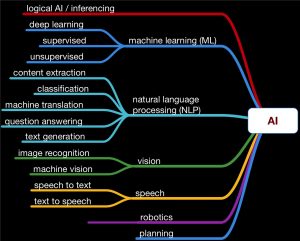
Since then, the theme has been introduced in all the discussions and speeches made by futurologists and stressed as an inexorable path to the substitution of human beings by the machines, almost coming to the grim view of the film ‘ Matrix’.
Bringing the discussion to the plane of reality and greatly simplifying the issue, what is generally called artificial intelligence are, in fact, mathematical (rather sophisticated, by the way) algorithms developed for very specific tasks, associated with the increasing exponential computing power and that have got the skill to self-adjust according to the results that are obtained.
It is true that all this is already causing an impact and will impact even more all the professions as we know them know today, but this said impact becomes clearer in law as this sector has been relatively protected along the time, exactly due to the difficulty, so far, in processing the language and unstructured information by means of the computer!
In the legal area, there are several development fronts using artificial intelligence (or at least parts of it) such as: knowledge automation, legal research, forecast or prognosis, contracts analysis, e-discovery and/or smart search engines. All these systems and technology have not been created to replace human beings, but to help them to be more efficient and should be adopted by all those (offices and their managers) that are attentive to the evolution of the market and the profession.
There are at least 35 companies in the North American market counting on products that are ready for the above-mentioned operation and also at least a dozen large international offices embracing this technology and becoming more efficient!
In a market that is effectively evolving due to the increase of competitiveness (internal and external), as well as pressure for prices, segmentation and consistent loss of revenues (at least in the North-American market), the adoption of technologies such as the “AI” is not only an option, it is a question of survival!
José Paulo Graciotti, is consultant and founding Partner of GRACIOTTI ASSESSORIA EMPRESARIAL, engeneer by Escola Politécnica Universidade de São Paulo, with Financial MBA at FGV and specialized in Knowledge Mnagement by FGV. ILTA Member since 1998 (International Legal Technology Association) and ALA (Association of Legal Administrators), with more than 28,7 years managing Law Firms in Brazil – www.graciotti.com.br
* Image from NEOTA LOGIC

